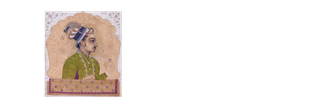The Reception of Hindu Religious Thought in Muslim India, with a Focus on Dārā Šikōh’s Majma‘ al-baḥrayn

The process of translation of Sanskrit sources into Persian must be reckoned among the great cross-cultural enterprises of mankind. It is wholly comparable, both in size and relevance, to the transmission of Greek philosophy into Arabic and Latin, or that of Buddhism into Chinese and Tibetan. This vast process of translation and adaptation of India’s knowledge into Persian began soon after the establishment of the Delhi Sultanate, in the early 13th century, and reached its climax with the Great Mughals (16th-18th centuries). Under their patronage, several Hindu scriptures were rendered into Persian, while Indo-Muslim scholars produced a large number of treatises on India’s religions, philosophy, history, geography, sciences, arts, techniques, etc. Although the scholarly community has long been aware of this tremendous literary output, among the great translation movements the one from Sanskrit into Persian surely remains the least studied. Most primary sources are still unpublished, or even unknown, while a thorough appraisal of the impact of such intense translation activity on the cultural and spiritual life of Indian Muslims – comparable to Dimitri Gutas’ Greek Thought, Arabic Culture: The Graeco-Arabic Translation Movement in Baghdad and Early Abbasid Society – is still a desideratum.
The research project aims to investigate the reception of Hindu religious thought in Muslim India, and the diverse and multifaceted processes of adaptation, appropriation, refutation and criticism which took place between these two religious traditions in premodern India. In this context, a pivotal role was played by prince Muḥammad Dārā Šikōh (1615-1659). Himself the author of works on sufism as well as sponsor of translations of Sanskrit scriptures, Dārā Šikōh managed to establish a fruitful collaboration between scholars and mystics of different faiths, and devoted his last years to the investigation of the religious and philosophical thought of the Hindus. This lifelong confrontation culminated in the Majma‘ al-Baḥrayn (“The Mingling of the Two Oceans”, 1655), a dense comparative treatise in Persian on the philosophical and religious equivalence of Hinduism and Islam. This work was further translated into Sanskrit – most likely under the author’s direct supervision – as the Samudrasaṅgama. The project will focus on a critical and comparative study of Dārā Šikōh’s Mingling of the Two Oceans, in both the Persian and Sanskrit renderings. The fundamental identity of Hinduism and Islam is upheld here in the wake of Ibn al-‘Arabī’s gnostic monism, on the one hand, and of the metaphysical concepts of Hindu Vedānta, on the other. The result of such startling assumption often amounts to a substantial reinterpretation of core Islamic religious notions.
The immediate goal of the project is to produce a comprehensive study on the Mingling of the Two Oceans, both in terms of theoretical contents and of the context of production. The major aspect of novelty is here represented by the comparative analysis of both the Persian and Sanskrit versions. As regards textual criticism, this approach leads to a much better reading of the text, whose manuscript tradition is highly problematic (with hundreds of variant readings in the Persian version and, in contrast, a single manuscript preserving the Sanskrit version). As regards its interpretation, it allows a clearer understanding of its subtleties and purport, since the two versions closely mirror each other and may therefore shed light on each other. On a broader level, the objectives of the project include: a general appraisal of the religious and philosophical impact of the Persian translations from Sanskrit on the Indo-Muslim culture in the Mughal period (16th-18th centuries); an assessment of the influence of some key Hindu religious concepts and ideas on the self-representation of the Muslim scholars engaged in the translation process; and an evaluation of the role and significance of this literary corpus as a means of cross-cultural encounter and exchange.

